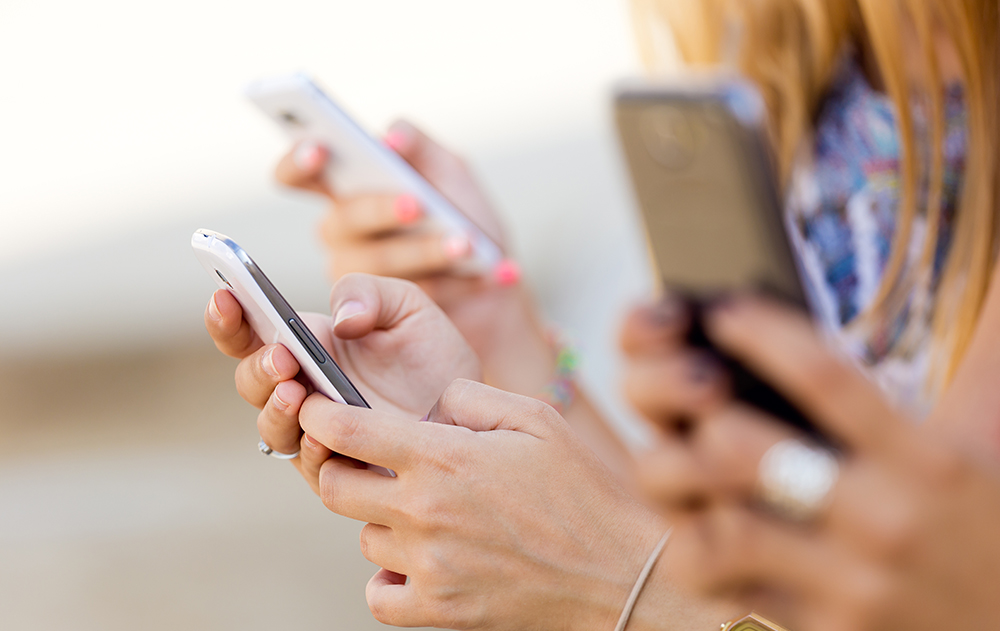No sign of hanging up on our love of mobile phones

These days it’s hard to imagine life without a mobile phone. These nifty little go-anywhere devices now pay our bills at a tap, allow us to search the internet, stay connected to social media and of course make phone calls and text on demand.
In Australia they’re such a ubiquitous device that experts tip this year will see market penetration peak at 84%, while Australians will drop $150 million on the latest iPhone alone.
It’s a far cry from the primitive ‘mobile’ devices of the 1970s, but an indication of how much things can change within a lifetime. So as Australia nears mobile saturation, let’s look at what’s in it for retailers and dial back time to take a quick call record of the history of the mobile phone…
The current market
After 10 years of the smartphone, this year sees Australian smartphone penetration peak at 84%, or approximately 16 million users, according to the Mobile Consumer Survey 2016, released by Deloitte.
That’s a figure slightly higher than the average global penetration of 81% and captures a younger demographic where 94% of Australians aged 18-24 have their own smartphone.
It comes as carriers shut down the 2G cellular network and shift across to the data-friendly 4G option.
Deloitte notes once peak penetration is reached, the likelihood is the market will then slow, but shows no sign of stopping with an average of five million handsets sold each year as Australians opt to upgrade around every three years.
And when it comes to the device of choice, Apple and Samsung lead the charge. Apple commands 43% of the Australian smartphone market while Samsung holds a further 33%.
Selling the mobile phone
For retailers now is the golden era of the smartphone, but in the present and into the future mobile phone retail presents the ongoing challenge of allowing consumers to touch and feel the latest smartphone, while guaranteeing the security of the device.
Mobile phone accessories remain the number one targeted electronic device, with items like iPads and tablets, following closely behind, according to the latest Global Retail Theft Barometer.
This means retailers need to harness seize the saturation point opportunity and then ensure the steady income flow of prompting consumers to upgrade. And to do that, mobile phones will need to be on phone displays and stands guarded against theft yet accessible.
But as Australia readies to reach its peak, let’s take a scroll back through the decades and call up the history of the mobile phone…
The future was here
Only 45 years ago the mobile phone was a futuristic concept, with the first true mobile prototype launched by Motorola in 1973. At the time it was a wonder – weighing in at a whopping 1.1kg, measuring 23cm long, 13cm and 4.5cm wide.
Mobile it was…convenient, not so much, with a half an hour of talk time requiring 10 hours of charging, but still it was the official launch of the mobile age.
Greed is good
In the heady days of the 1980s when “greed was good” and heading “back to the future” was a source of wonder, major advances saw the initial market adoption of the mobile phone. The analogue cellular phone system was rolled out in the US in ‘83, Israel in ‘86 and Australia in ‘87. Still, battery life was an issue and going mobile was remained a weighty and often bulky move.
The second generation
The 1990s saw huge leaps in mobile technology with the introduction of many of the digital transmission technologies still in play today. Phones became smaller, offering true mobility with nifty little features like SMS, fliptops and more.
This shift in technology saw a rapid uptake of mobile usage, with consumers quickly realising the convenience they could offer in terms of safety and work.
The naughties
The 000s brought further technological advancements including faster networks, increased coverage and downloadable data to support mobile phones. Critically, it also brought a seminal moment in mobile history – the launch and rapid market adoption of…the smartphone
The smartphone
January 2017 marked a decade since the smartphone officially became part of common culture courtesy of Apple and the game-changing iPhone. This new addition to the cellular sphere abandoned a physical keyboard, introduced a whole new world of apps and arguably made the mobile a must-have item.
And usage took off. In 2007, 1.2 million smartphones were sold globally and by 2016 it had increased to 1.5 billion globally, according to Statista.
Where to from here?
Faster internet speeds and greater data access will only continue to fuel our passion for the smartphone, notes Deloitte.
“This growing hunger for more data and an always-on mindset is shaping consumer purchasing behaviours and their growing expectation for better quality networks and much larger mobile data plans – all for a lower price”.
Meanwhile the phone is not for calling, with “email, social media and instant messaging our most favoured activities”. It’s also our preferred camera, and increasingly our mobile wallet. We go to bed with it next to us and wake up to check it first thing.
“… without question, we are increasingly being distracted by our favourite device. Australian mobile consumers interact with their smartphone 480 million times a day – that’s a 40 million increase over last year’s survey. We are spending more time with our phone during all hours – including in the middle of the night and in social situations that once would have been a no-phone zone.”
The final word
Australia might be reaching maximum market penetration, but there’s little chance the mobile phone will be fading from retail view. The mobile phone is simply the must-have item that consumers are keen to upgrade, embrace and always have at hand.